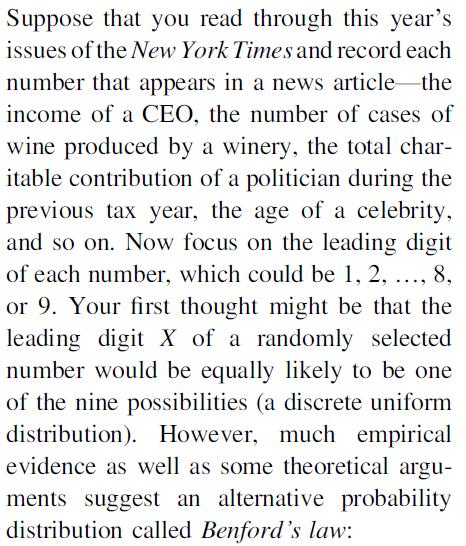Benfords Law, introduced in Chapter 3 Exercise 19, postulates that the lead digits (1, 2, , 9)
Question:
Benford’s Law, introduced in Chapter 3 Exercise 19, postulates that the lead digits (1, 2, …, 9) in a large data set should follow the rule



(So, for example, the proportion of numbers with a leading 1 is predicted to be log10(2) ≈ .3, and the probabilities decrease as d increases.) The author of the article “Benford’s Law Applies to Online Social Networks” (PLoS One 2015) used Twitter’s API to randomly sample 78,226 Twitter users and record the number of followers each person has. The lead digits of those counts are summarized below.

Does the data indicate that the lead digits of the variable “number of Twitter followers” indeed conforms to Benford’s Law? Test at the .05 significance level.
Step by Step Answer:

Modern Mathematical Statistics With Applications
ISBN: 9783030551551
3rd Edition
Authors: Jay L. Devore, Kenneth N. Berk, Matthew A. Carlton





